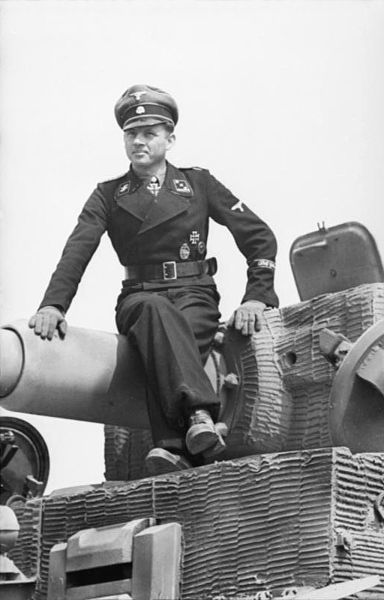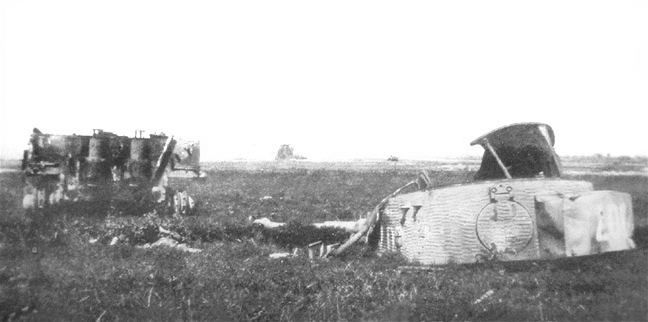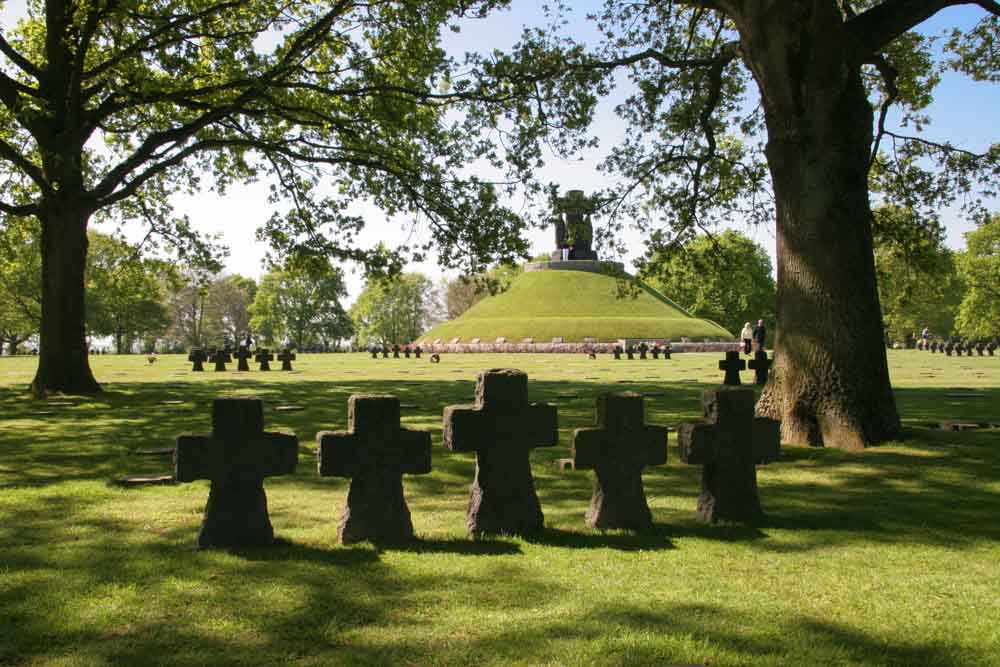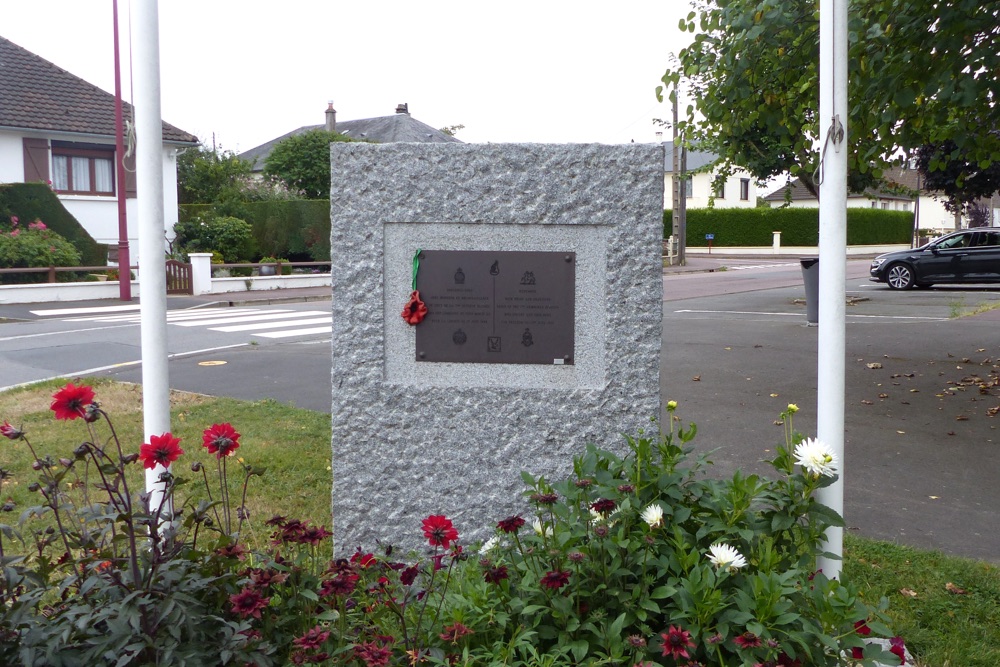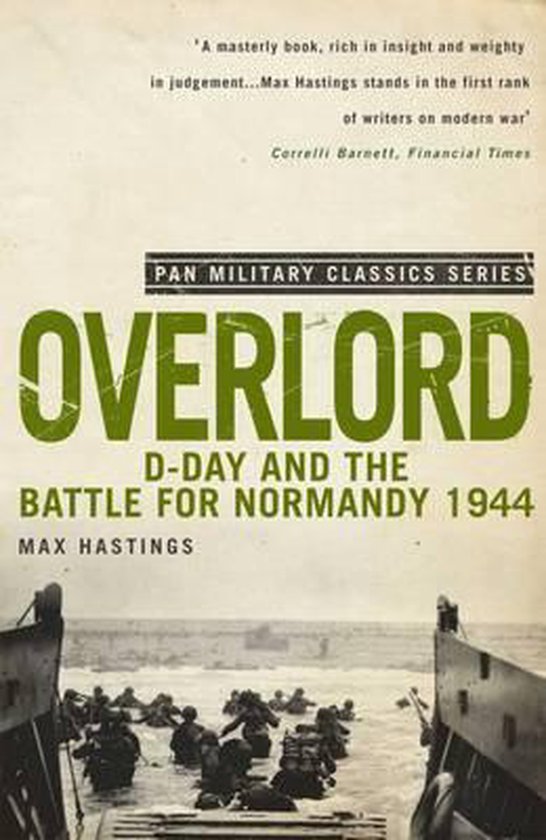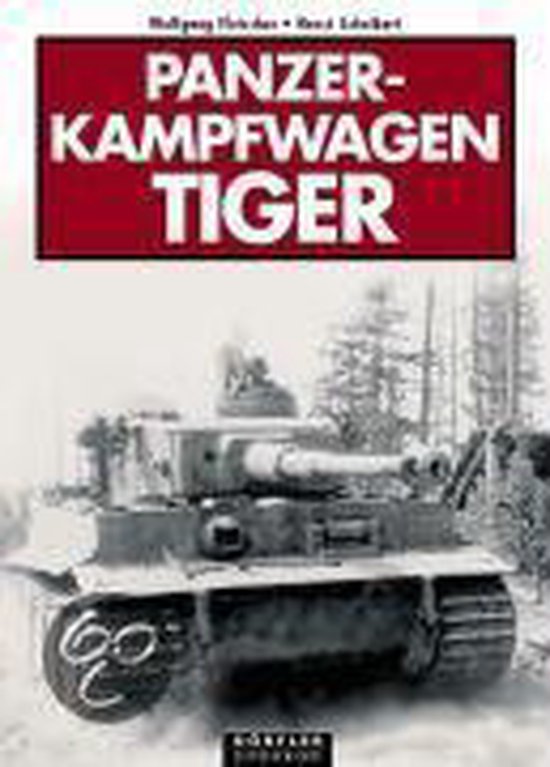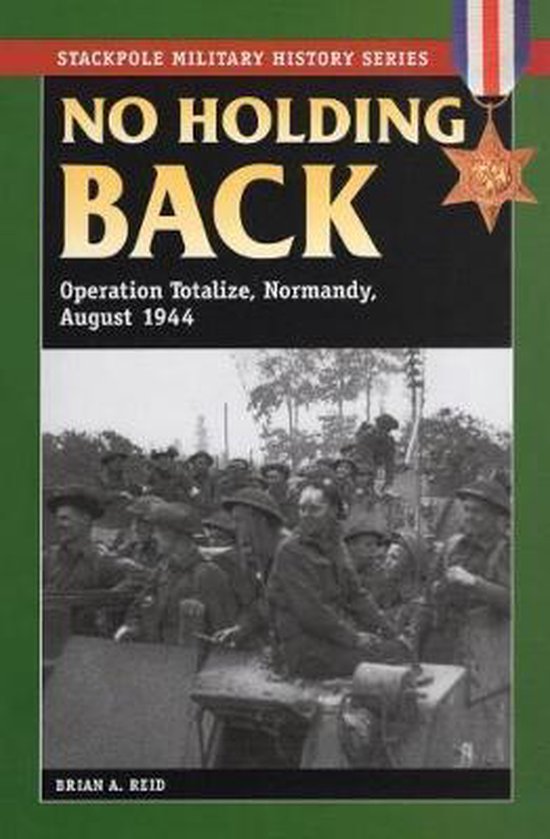April 22, 1914 - August 8, 1944
Introduction
Thinking of German tank commanders of World War Two, names like Otto Carius, Heinz Günter, Kurt Knispel and Franz Bäke come to mind easily, but one of the best known with the highest number of enemy vehicles destroyed remains Michael Wittmann. He was born April 22, 1914 in Vogelthal in the Bavarian Oberpfalz and he died August 8, 1944 near Cynthia in Normandy. This is his story.
Prior to the war
After graduation from high school Michael Wittmann worked at the farm of his parents Ursula and Johann Wittmann. Later on he also worked on a dairy farm. Like many others at the time he voluntarily joined the Reichsarbeitsdienst in February 1934, serving until July 31, 1934. October 30, 1943 he was drafted into the 10. Kompanie of the Infantryregiment 19 in the army branch of the Reichswehr. He left the service on September 30, 1936 holding the rank of Gefreiter, now in the Wehrmacht as the Reichswehr had meanwhile been transformed into the Wehrmacht in March 1935. Subsequently he was employed as a railway worker in Ingolstadt for a short while.
October 1, 1936 he submitted a request to join the local SS unit in Ingolstadt, this was granted and on November 1 he was posted to the 1. Sturm of the 92 SS-Standarte. He became an official member of the N.S.D.A.P. on March 1, 1938 (member number 5508244). April 5, 1938 he began training in the 17. Kompanie, Waffen-SS Leibstandarte Adolf Hitler in the rank of SS-Mann. He was promoted to SS-Sturmmann on November 9, 1938 and with his Panzer-Späh Kompanie (armored reconnaissance unit) he took part in the occupation of Austria and the Sudetenland. April 20, 1939 saw him promoted to SS-Unterscharführer.
At the Eastern Front
September 1, 1939, during the invasion of Poland (Fall Weiß) Wittmann served in a reconnaissance unit as commander of a Panzer Späh Wagen (Sd Kfz 232, armored reconnaissance vehicle). As from April 1941 during the attack on the Balkans, he was commander of one of the first Sturmgeschütze (Stug III Ausf. A, assault gun) which entered service in the LAH (SS-Sturmgeschütz-Batterie) from early 1940 onwards. He took part in Operation Barbarossa, the attack on the Soviet Union on June 22, 1941 from the beginning. July 12, 1941, he was awarded the Eisernes Kreuz II (EK, Iron Cross) for the destruction of 6 Soviet tanks. He was lightly wounded on August 3, 1941 and for the second time on October 8. He was awarded the Verwundetenabzeichen in Schwarz (Medal for the injured in black) on August 20, 1941 and the EK I on September 8, 1941. From June 4 until September 1942 he attended SS-officers training at the SS-Junkerschule in Tölz.
December 21, 1942, he was promoted to SS-Untersturmführer and that same month, he was transferred to the Panzer-Ersatz und Ausbildungsabteilung (armored reserve and training unit) to be trained as commander of a PzKpfw VI Tiger tank. In January 1943, he went back to the Eastern Front. After a short tenure as platoon commander in the light Pz III Ausf. J, from April 1943 onwards, he was in command of a platoon of PzKpfw VI Tiger tanks. After advanced training with these new tanks, his unit was renamed 13. Schweres SS-Panzerregiment 3. LAH. He took part in the battle of Kharkov (February – March 1943) and experienced the defeat at Kursk (Operation Citadel, July 5 – 17 1943). January 13, 1944 he destroyed 19 Soviet tanks and 3 heavy SU-122's. For this achievement, he would be awarded the Ritterkreuz (RK Knight's Cross) on January 14. Wittmann presumably destroyed a total of 66 tanks at that moment. After having destroyed yet more tanks, 16 days later he was awarded the Eichenlaub (Oak Leaves) to his RK on January 30, 1944, the 380th recipient of this award. It was reported he had now destroyed 114 tanks. On March 1, 1944, he married his fiancée Hildegard Burmeister.
Normandy
Following the Allied landings in Normandy on June 6, 1944, Operation Overlord, his unit was transferred to the new western front. He was now Company commander of s. SS-PzReg 101 LAH. His best known action took place on June 13, 1944 during his company's attack (6 PzKpfw's VI and 1 PzKpfw IV) on the small village of Villers-Bocage, a few miles southeast of Caen. In order to protect the left flank of 1. SS Panzerkorps he led an attack on two battalions of the British 7th Armored Division (the Desert Rats) advancing along the road between Caen and Villers-Bocage. Without any support from infantry, he inflicted heavy losses on the British but later that day he had to abandon his Tiger after a hit in its tracks. This round was fired by a British anti-tank gun in Villers-Bocage. He and his crew reached the German lines on foot, 10 miles away and he reported back to the Panzer Lehr Division. That day, Wittmann destroyed 12 British tanks, 1 reconnaissance vehicle, 10 half-tracks and 4 Bren carriers entirely on his own. For this achievement, he was awarded the Schwerter (Swords) to his RK, the 71st recipient of this award. He was even received by Hitler (Bio Hitler) himself. He rejected an offer for transfer to a training unit as an instructor as he wanted to return to his own unit. Shortly thereafter, he was promoted to Hauptmann.
August 8, 1944 he was deployed on Route Nationale 158 between Caen and Falaise near Cynthia. The Germans had been informed British units had occupied the village of St. Aignan-de-Cramesnil with its strategic hills in the course of the night (Operation Totalize). The Germans were ordered to launch a counter-attack and Wittmann and two other Tiger tanks drove north without preliminary reconnaissance. Subsequently he probably lost his life as a result of flanking fire from 3 M4 Shermans and a Sherman Firefly of A squadron, 1st Northhamptonshire Yeomanry deployed in the northeast. These tanks were positioned in such a way – in an orchard and protected in the south by a nearby forest – they could only be spotted at the last moment by Tigers attacking to the north over open terrain and with the advantage of surprise, they could open fire first.
The M4 Sherman Firefly of Sergeant Douglas Gordon with gunner Trooper Joe Ekins opened fire on the rear Tiger, Wittmann's tank from a distance of some 800 yards. At that distance, the shell of the British 17 pounds, 76.2mm anti-tank gun of the Firefly could well penetrate the flank armor of a PzKfpw Tiger. Ekins placed two consecutive direct hits which probably caused the ammunition or the fuel to explode, blasting the turret off Wittmann's tank which then fell to the ground a few yards away upside down. The other two Tigers, attacking in the same direction as Wittmann were destroyed as well by the Firefly. That day, August 8, 1944 s SS-Pz Reg 101 LAH lost a total of 6 Tiger tanks in the vicinity of Cramesnil. Together with the loss of Wittmann, this was a black day for the unit.
Up until today, the exact sequence of events leading to the destruction of Wittmann's tank is still open to discussion. For example, it is argued an R.A.F. Typhoon fighter-bomber fired its rockets at Wittmann's tank, hitting the only lightly armored engine cover and causing the explosion. There is however no recorded evidence for this claim. Furthermore, other Canadian (Canadian 4th Armored Division) and Polish (Polish 1st Armored Division) armored units deployed farther to the northwest and north are credited with the destruction of Wittmann's tank. As possible other cause, a direct hit by artillery shells – German or Allied – is cited. Today, the most accepted course of events remains: the success of the Sherman Firefly is credited to gunner Joe Ekins. Wittmann and his crew remained officially missing until 1983. As late as that year, the Volksbund Deutsche Kriegsgrabfürsorge, comparable to the Commonwealth War Graves Commission, ordered an excavation in a field adjacent to RN 158 near Gaumesnil and the remains of Wittmann and his crew were found. Wittmann was positively identified. Later on, he and his crew were buried on the War Cemetery at La Cambe.
Reputation
Thus ended the life of one of the best known, highly decorated soldiers of the Wehrmacht and the German armored forces from the period 1933-1945, portrayed as a hero. The exact number of his kills is a hotly debated issue. According to recent critical ratings and afterthoughts he would have put 138 enemy tanks and 132 anti tank guns out of action. According to tank experts, putting an anti tank gun out of action is a far greater achievement than putting a tank out of action. Wittmann was exploited by the Nazi regime and celebrated like a hero. Certain neo-Nazi groups and authors still honor him as a hero until today. Wittmann played the role for which he had been trained long and hard to the best of his ability: making full use of tactical and technical skills to do the handiwork of a tank commander.
Being a crewmember of a PzKpfw VI Tiger tank, he enjoyed two great advantages as compared to Allied tanks: the front armor of the tank was virtually impenetrable and the 88mm KwK 36 mounted gun was – until May 1944 – the most powerful gun on the battlefield. His abilities as a leader are still being questioned today. His attack with a single Tiger near Villers-Bocage on an enemy equipped with tanks, infantry and anti tank weapons is generally considered very daring. Nothing is known about what Wittmann's thoughts were about the despicable politics of the Third Reich or the persecution of the Jews. He must have had his reasons, unknown to us, for voluntarily signing up with the SS and becoming a member of the Nazi party, even after his compulsory service in the Reichswehr. It is a well known fact today that the unit he served in, the Waffen-SS Leibstandarte Adolf Hitler, committed atrocities and war crimes in Poland, France, Italy, Belgium and Russia.
Read more about the decorations of this person on TracesofWar.com
Definitielijst
- Commonwealth
- Intergovernmental organisation of independent states in the former British Empire. A bomber crew could include an English pilot, a Welsh navigator, air gunners from Australia or New Zealand. There were also non-commonwealth Poles and Czechs in Bomber Command.
- Division
- Military unit, usually consisting of one upto four regiments and usually making up a corps. In theory a division consists of 10,000 to 20,000 men.
- Eisernes Kreuz
- Iron Cross. German military decoration.
- infantry
- Foot soldiers of a given army.
- invasion
- Armed incursion.
- Iron Cross
- English translation of the German decoration Eisernes Kreuz.
- Jews
- Middle Eastern people with own religion that lived in Palestine. They distinguished themselves by their strong monotheism and the strict observance of the Law and tradition. During World War 2 the Jewish people were ruthlessly persecuted and annihilated by the German Nazis. . An estimated 6,000,000 Jews were exterminated.
- Leibstandarte
- Elite troops, originally Hitler’s body guards. Starting as a motorized infantry regiment it grew into a Panzer division.
- Nazi
- Abbreviation of a national socialist.
- persecution of the Jews
- "Judenverfolgung", action imposed by the Nazis to make life hard for the Jews, to actively persecute them and even annihilate them.
- Reichswehr
- German army during the Weimar republic.
- Soviet Union
- Soviet Russia, alternative name for the USSR.
- squadron
- A military unit in the Belgian navy usually six to eight small ships operating together under one command. The smallest military unit in the Dutch air force of about 350 men. In most countries is the designation of a military unit thesize of a company. It is either an independent unit, such as a battery, or part of a bigger Calvary unit. In the air force it is the designation of a unit of aircrafts.
- Trooper
- Short for paratrooper.
- Waffen-SS
- Name of Military section of the SS.
- war crimes
- Crimes committed in wartime. Often concerning crimes committed by soldiers against civilians.
- Wehrmacht
- German armed military forces, divided in ground forces, air force and navy.
Images
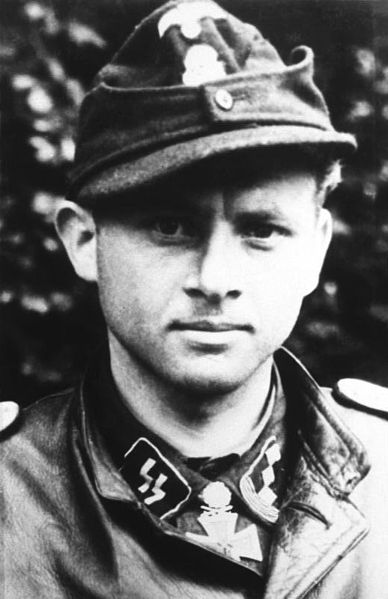 SS-Hauptsturmführer Michael Wittmann wearing his Knight's Cross with Oak Leaves and Swords, June 1944. Source: Bundesarchiv, Bild 146-1983-108-29 / Woscidlo, Wilfried / CC-BY-SA 3.0.
SS-Hauptsturmführer Michael Wittmann wearing his Knight's Cross with Oak Leaves and Swords, June 1944. Source: Bundesarchiv, Bild 146-1983-108-29 / Woscidlo, Wilfried / CC-BY-SA 3.0.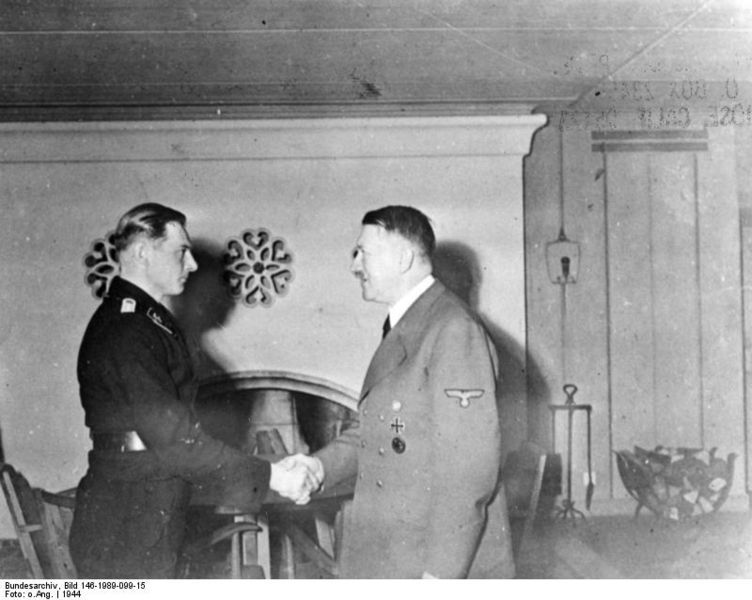 Wittmann and Hitler shaking hands in the Wolfschanze, January 30, 1944. Source: Bundesarchiv, Bild 146-1989-099-15 / CC-BY-SA.
Wittmann and Hitler shaking hands in the Wolfschanze, January 30, 1944. Source: Bundesarchiv, Bild 146-1989-099-15 / CC-BY-SA.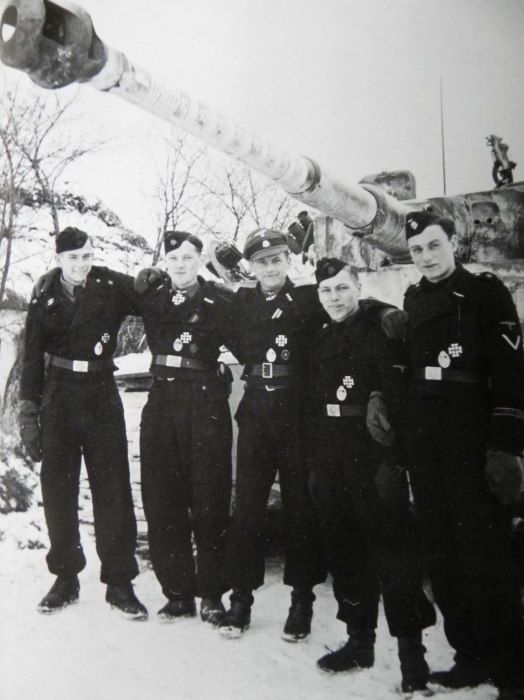 Wittmann (center) and his tank crew, January 1944. Source: Archive Heinrich Hoffmann / Public domain.
Wittmann (center) and his tank crew, January 1944. Source: Archive Heinrich Hoffmann / Public domain.Information
- Translated by:
- Arnold Palthe
- Published on:
- 29-03-2018
- Last edit on:
- 24-11-2023
- Feedback?
- Send it!
Related sights
Related books
Sources
- BEEVOR, A., D-Day: The Battle for Normandy, Penguin Books, Londen, 2009.
- FORD R., Tiger Panzer, Edition Dörfler im Nebel Verlag, Eggolsheim, 2002.
- HASTINGS, M, Overlord, Pan Books, Londen, 2010.
- JORGENSEN, C. & MANN, C., Panzerschlachten, Amber Books Ltd, Londen, 2001.
- KÜHN, V. & KLEINE, E., Tiger, Die Geschichte einer legendären Waffe, Fleischer Verlag, Dresden, 2007.
- REID, B.A., No Holding Back: Operation Totalize, Stackpole Books, Mechanicsburg, 2009.
- SCHNEIDER, W., Tiger im Kampf, Die Einsätze in der Normandie, Schneider Armour Research, Uelzen, 2004.
